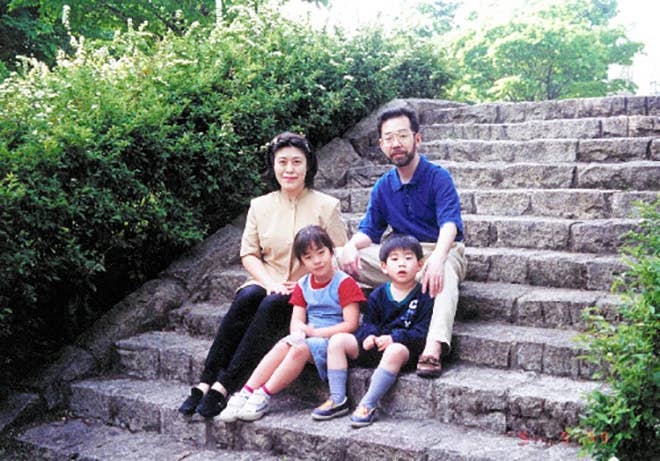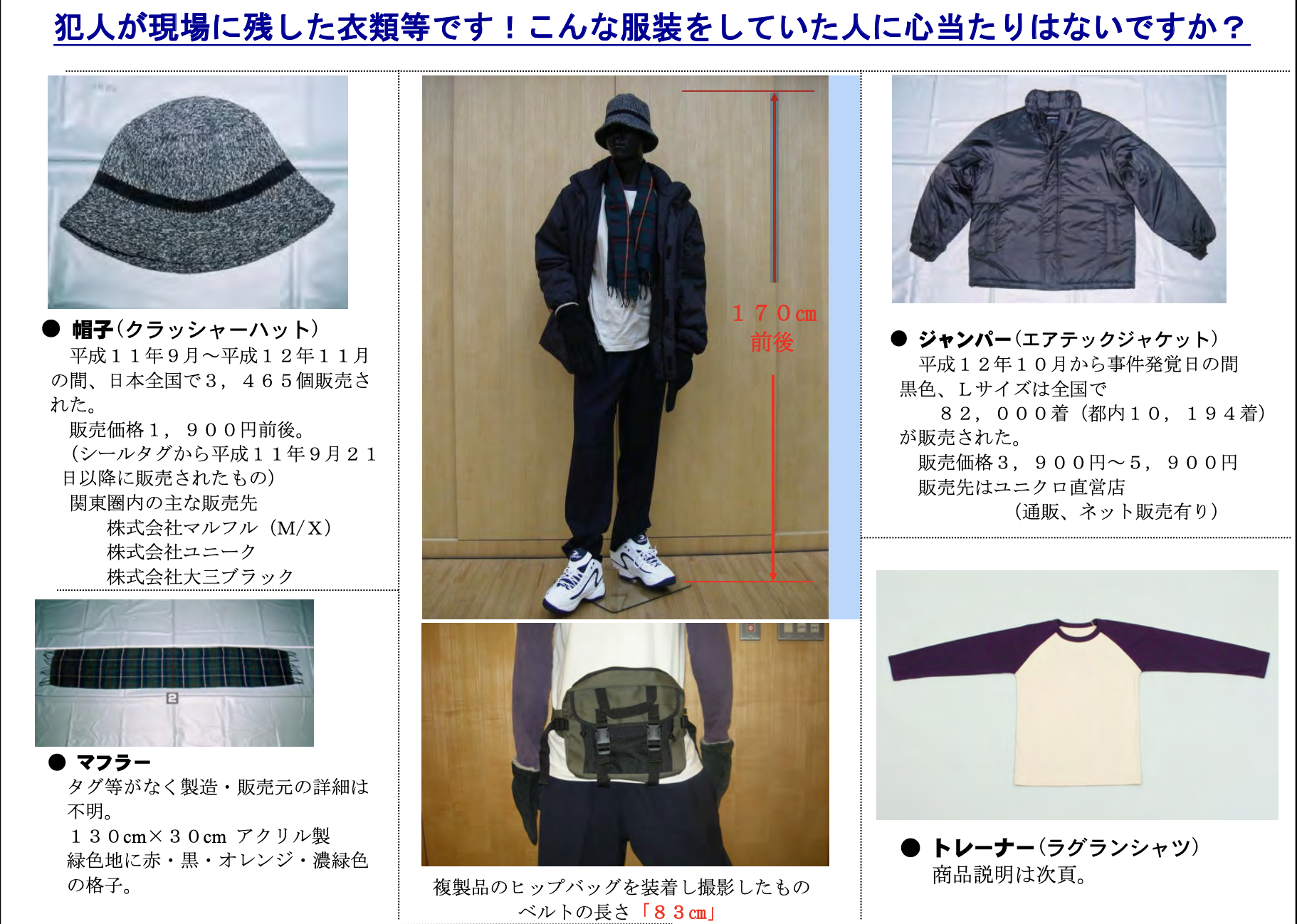
It has been 44 days since four university students were brutally stabbed to death in their Idaho home in the early hours of Nov. 13, and police have yet to arrest a suspect. Five thousand miles away, another baffling late-night murder of four people in their home remains unsolved after 22 years, despite massive amounts of evidence left by the killer. And as in the Idaho killings, the motive for the heinous crimes remains a mystery.
The case is known as the Setagaya family murders, after the Tokyo neighborhood that was home to the victims: a married couple and their young children.
The Setagaya killer was vicious and brazen. He left so much evidence behind that police were even able to determine what he ate before the killings — he defecated in their toilet without flushing.
The Killings
Sometime after 11 p.m. on Dec. 30, 2000, Mikio Miyazawa, 44; his 41-year-old wife, Yasuko; their 8-year-old daughter, Niina; and their 6-year-old son, Rei, were killed by an unknown intruder. The attack was ferocious: While the killer was stabbing Mikio, his knife broke — part of the sashimi knife’s blade was found in Mikio’s head — so he used one of the kitchen knives in the home to kill Yasuko and Niina. Yasuko was stabbed so viciously in her chest and head that her bones were visible.
Yasuko’s mother, who lived next door, found their bodies on the morning of New Year’s Eve. Unable to reach her daughter — their phone had been disconnected, presumably by the killer — she unlocked the front door of their house and made a gruesome discovery: the body of her son-in-law, Mikio, lying at the bottom of the stairs, covered in blood from multiple stab wounds. She continued up the stairs and found the body of her daughter covering her dead granddaughter.
Rei’s body was lying on a bunk bed in the adjacent bedroom; unlike the others, he had been strangled.
Yasuko was a tutor and Mikio was working for a British marketing company. Niina was in second grade; Rei was a kindergartener.
The “Goldilocks Murder”
The case is also known as the Goldilocks murder because of the unknown suspect’s strange behavior after he killed the family.
Tokyo’s Metropolitan Police Department believes the killer arrived at the home sometime after 11 p.m. and stayed there until dawn. (Police had originally thought he was there as late as 10 a.m. using the computer, but they later backtracked on this theory, believing that Yasuko’s mom triggered the connection by knocking the computer’s mouse when she was in the house.)
After the murders, the killer raided the Miyazawas’ kitchen. He ate four small containers of ice cream and drank several bottles of barley tea that he found there.
He used the family’s first-floor computer to surf the internet at 1:18 a.m., and some reports indicate he might even have taken a nap on their sofa. He also ransacked the house and dumped some of their belongings and paperwork in the bathtub.

The Killer’s Clothing
The amount of physical evidence the killer left behind is staggering. According to Tokyo police, that evidence included the following articles of clothing:
A gray crusher/bucket hat
A baseball shirt drenched in blood from at least one of the victims that was white with purple sleeves, one of only 130 sold in Japan
A cheap plaid scarf
A jacket
Black gloves
Two black handkerchiefs, one with a hole in the middle and wrapped around a kitchen knife, one of the murder weapons; police believe the killer used the other one as a mask. They identified cologne on the cut handkerchief as the popular Drakkar Noir men’s fragrance.
A gray-and-black fanny pack
Based on a footprint at the scene, the killer was wearing size 11 white running shoes manufactured in South Korea; no shoes of this size were sold in Japan.
Other evidence belonging to the killer:
The aforementioned feces
Fingerprints
Shoe prints
Blood and bloodstains
Police also found an open first aid kit and sanitary napkins soaked in the killer’s blood; it’s believed he used them to treat his own wounds.
Details about the killer:
About 5 feet 6 inches tall
Slender (based on the 32-inch waist of his fanny pack)
Type A blood
Right-handed
Between 15 and 35 years old
Ate a meal containing string beans and sesame seeds before the attack (based on his feces)
Police believe he is likely not a Japanese citizen, based on several factors:
DNA indicates his ancestry is Asian via his father and European from his mother, and it has a marker much more common in Koreans and Chinese people than in Japanese people.
The shoe size of the brand he wore was not sold in Japan.
Investigators have not found a match for his fingerprints on any Japanese driver’s licenses, passports, or other government documents.
Grains of sand found in his fanny pack are believed to have originated in the Southwestern US.

The Location
The Miyazawas and Yasuko’s relatives lived in two of four homes remaining in a housing development that once numbered in the hundreds. The others had been torn down to make room for the Tokyo Municipal Soshigaya Park; the Miyazawas had sold their home but had not yet moved. In the hopes of attracting potential witnesses, police even released 3D video of the Miyazawas’ house and its vicinity.
Police believe the killer entered the house through the second-floor bathroom and likely left the same way: Its window was open and the screen removed. Rei slept in the adjacent bedroom, which is one reason police suspect he was killed first and strangled instead of stabbed like the others.
Possible Motive
No motive has been established, and none of the theories suggested over the years is particularly convincing.
Money: Some of Yasuko’s tutoring money was missing, and there has been speculation that the intruder — possibly a hired killer — might have believed he could somehow access the money the Miyazawas made from selling their house. But the killer did not take all of the family’s cash — close to 250,000 yen (just under $2,000) was found at the scene.
Angry skateboarders: I kid you not — police reportedly even investigated whether Mikio’s alleged complaints about the noise from the nearby skate park made someone furious enough to kill his entire family. (Here’s a real headdesk for you: Some have made a gargantuan leap between skateboarders and Drakkar Noir cologne.)
Revenge: I’ve only seen this theory espoused by redditors, bloggers, and podcasters, with no factual evidence or insight to support it.
For a detailed examination of the speculation surrounding the killings, check out Faceless, a recent seven-part podcast about the Setagaya family murders. Host Nic Obregón devotes whole episodes to some theories — some sound, others silly — about who the killer might be and his motive for committing the heinous crime.
The Buddha Statue
Police considered it significant that a 2-foot-tall Buddhist statue was found in April 2001 near the Miyazawa house. They distributed more than 30,000 flyers featuring a picture of the statue, a Jizo bodhisattva considered to be a guardian of dead children.
The Reward
There is a reward of 20 million yen (more than $150,000) — the largest in Japanese history — for credible information leading to the arrest of a suspect.
Japan only abolished its statute of limitations for murder in 2010 — otherwise, the Miyazawas’ killer might have escaped prosecution if he were caught. Police are still actively investigating the case: More than 280,000 investigators have reportedly worked on it, following up on more than 16,000 tips.
The house where the Miyazawa family was killed is still standing, according to the Faceless podcast, despite the initial plans to demolish it after they moved out. Three years ago, Yasuko's older sister, Anne Irie, opened the house to reporters. In the video of that tour, you can see dozens of boxes containing the family’s belongings that had been returned by police to the victims’ surviving families. Some of the Miyazawas’ furniture remains, and penciled lines on one wall document the children’s growth. A round plaque with their name surrounded by flowers hangs on the outside wall by the front door.

Don't forget to subscribe to our true crime newsletter, Suspicious Circumstances, to get true crime deep dives delivered straight to your inbox every week. Sign up here.
